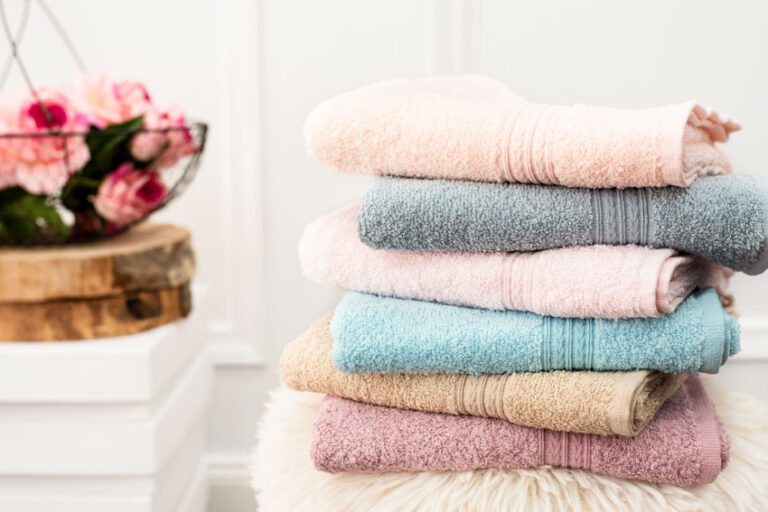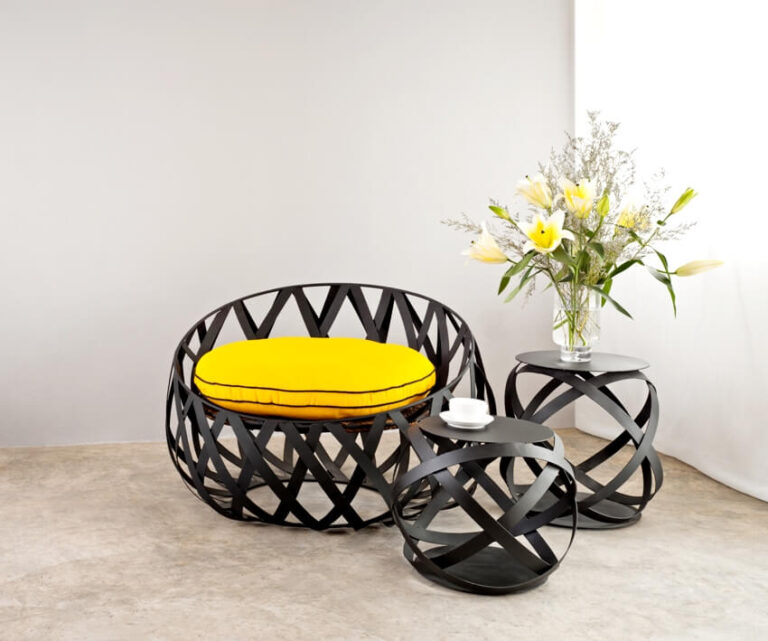Pros and Cons of Turkish Towels
In this guide we cover the pros and cons of Turkish towels including what they are, washing, drying & care tips, and their comparison to Egyptian towels.
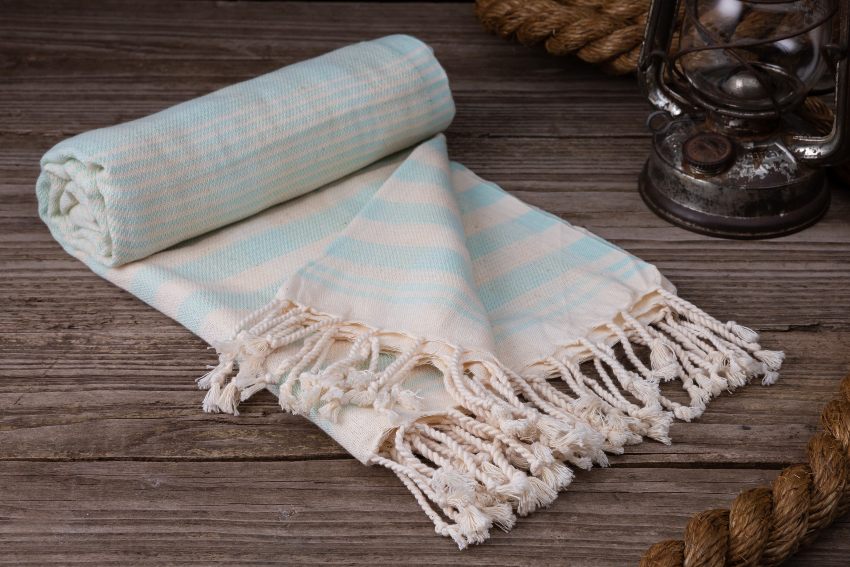
What Are Turkish Towels?
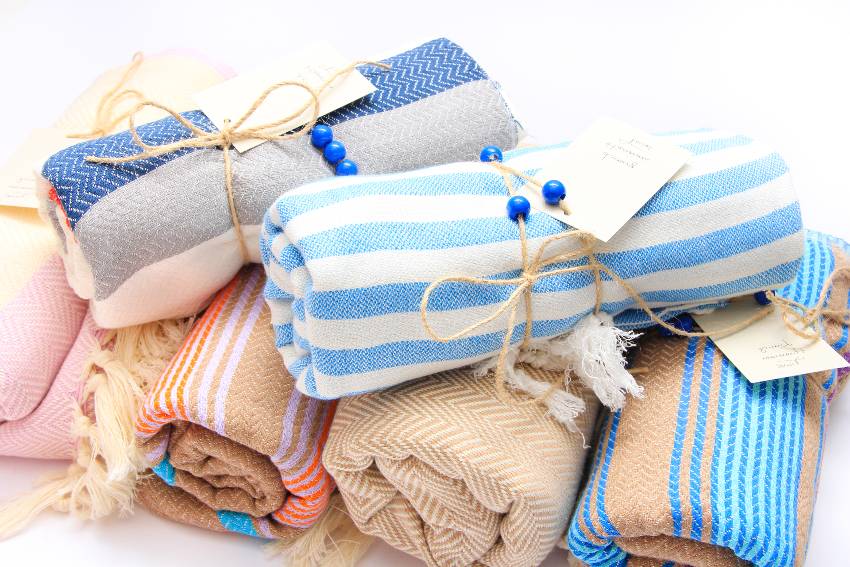
You may use them as a picnic blanket in a park or sand protection on a beach day since they are very sturdy. Although they are not as warm and soft as others for the first use, they become more absorbent with each wash. Additionally, they dry pretty quickly.
Turkish towels also often have a thinner consistency than fluffy towels, which is perfect for travelers who wish to minimize their luggage or pack lightly. One may be used as a shawl to keep warm during a frigid airline flight or as a cover-up for your swimming suit.
They have clear functional advantages in addition to being lovely. Turkish towels are widely available online, coming in various designs, sizes, and forms.
Turkish Towel Pros
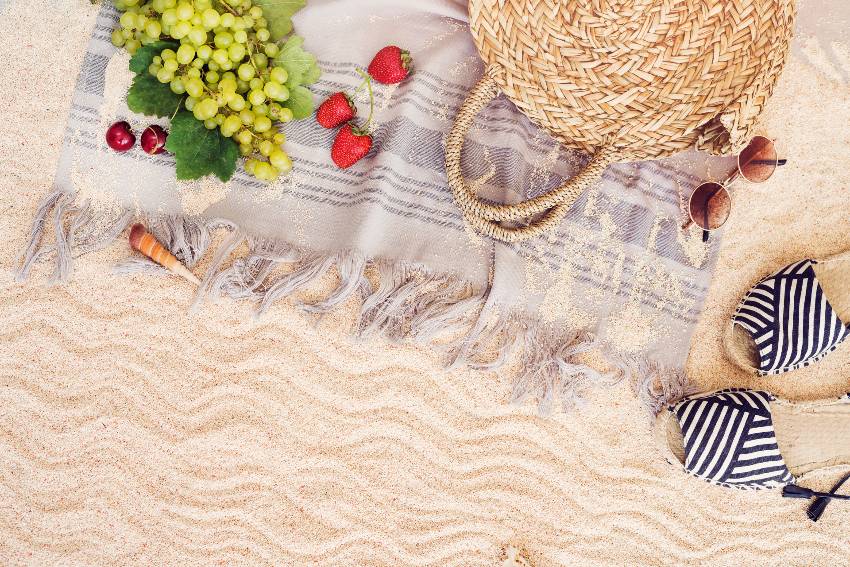
• Do not be deceived by their flat weave; they are incredibly absorbent. Turkish towels are equally absorbent as terry-cloth towels.
• Even in humid regions, they dry quicker and always have a fresh scent.
• Sand doesn’t attach to Turkish towels on the beach.
• The more you use and wash them, the softer and more absorbent they get. With the proper maintenance, premium Turkish towels will last a lifetime.
• They are portable and straightforward to store. Turkish towels are very space-saving.
Turkish Towel Cons
• Some people find Turkish towels’ fringe to be unpleasant.
• Some people believe Turkish towels aren’t exceptionally absorbent at first. They get more absorbent the more you use and wash them.
• Turkish towels lack fluffiness. That is intentional: But it does not imply that they are not soft.
• The cost, sometimes. Why do Turkish towels cost so much? The price is undoubtedly high when you seek exceptional goods manufactured responsibly in small quantities by artisans that will last a lifetime.
Are Turkish Towels Absorbent?
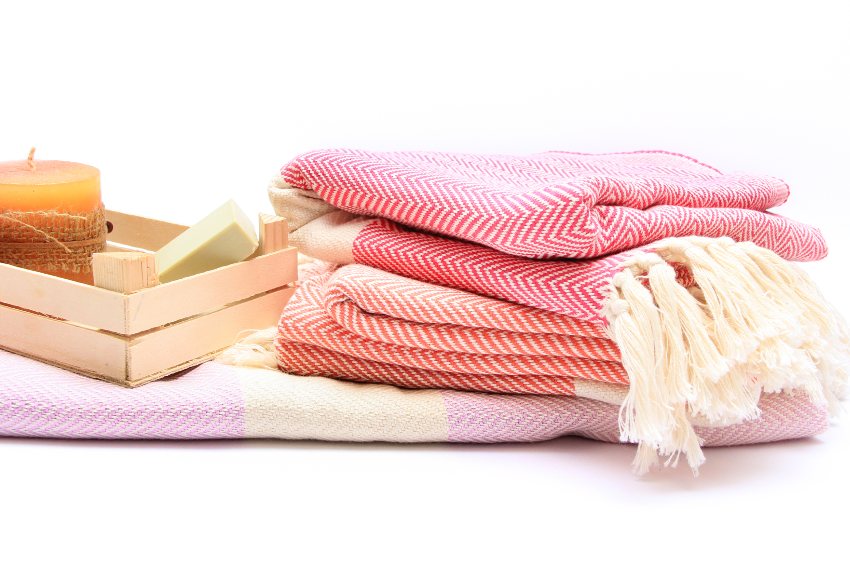
Turkish cotton offers the ideal blend of softness and absorption, making it the best cotton for use in towels. It becomes increasingly softer, fluffier, and more absorbent with each washing.
The foundation weave and the pile, sometimes referred to as the towel’s loops are a towel’s two fundamental components. How well you can dry off depends mainly on the loops’ number, length, and tightness; these factors all impact how absorbent your towel is.
Longer and more numerous loops enhance the towel’s surface area, increasing its capacity to absorb water. Another element is yarn thickness. More loops per square inch are possible with thinner yarn, increasing the surface area.
Therefore, if absorbance is a top need, you should search for towels with a deep pile and thin yarn. In other words, Turkish cotton towels produce thinner yarns than different varieties of cotton due to their long, thin fibers.
How do you determine if your Turkish towels have thick yarn and deep piles? The term “grams per square meter,” or GSM, is a standard unit of measurement for fabrics.
The number indicates the density of the cloth; the higher the number, the denser and thus more absorbent your towel will be. A decent towel will typically have a GSM of at least 500. Premium Turkish cotton towels are heavier (600+), making them absorbent.
How To Wash Turkish Towels
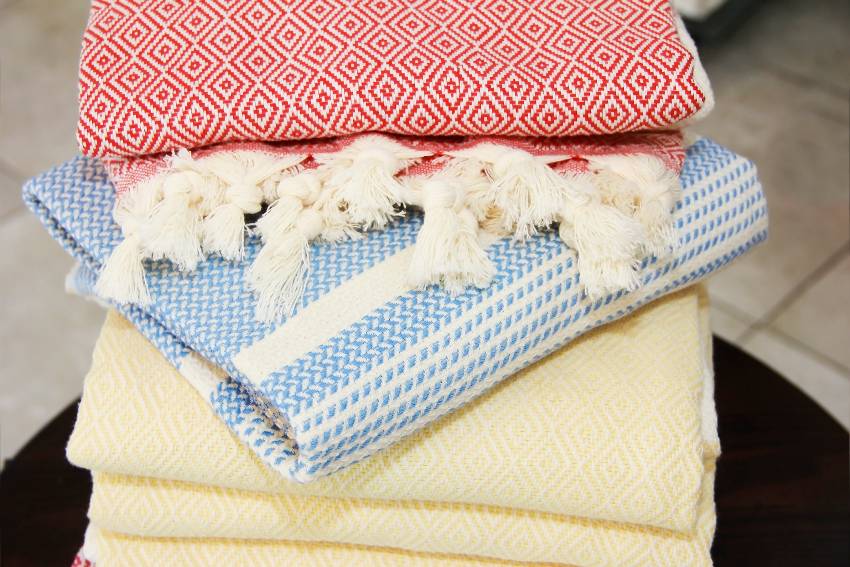
How To Wash Turkish Towels First Time
1. First, you must soak new Turkish towels in cold water. Turkish towels are soft when they are initially delivered.
You may wash them before using them to help the long threads spread out and become more absorbent. Spend at least 12 hours soaking your towels. Make sure there is enough water in the tub so that your towel receives a good soaking.
2. Wring out your towel once it has soaked in water, then hang it up to dry. Turkish towels will keep more supple, bendable, and absorbent if you hang dry them. It is also more environmentally friendly.
Regularly Washing a Turkish Towel
It’s time to wash your towel after you’ve soaked/dried it and savored its softness. We advise cleaning your Turkish towel in cold or medium-temperature water to keep it as fresh as possible.
Instructions:
• Machine-wash the towel using a cold, delicate-cycle
• Never wash your towel with fabric softener bleach or bleach
• Use a low heat setting or hang the towel to dry
Can Turkish Towels Go In The Dryer?
After the first usage, Turkish towels may dry in the dryer, but be sure to tumble dry on low or medium heat. Too much heat may damage the cotton thread, making towels less soft and dry. You may also check our guide to heated towel warmer & rack ideas here.
How To Care For Turkish Towels
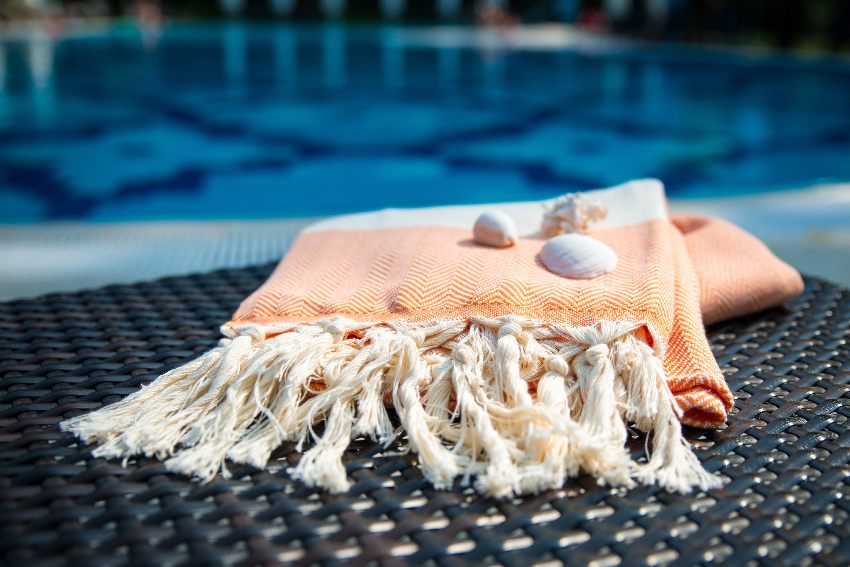
Once again, this needs a simple repair! Just divide the threads into two equal pieces. Then, in a counterclockwise direction, twist the two parts together. Once you finish the knot, you’re ready to go!
Utilize neither bleach nor fabric softener. Fabric softener will reduce the absorbency of your towels. Instead, use vinegar.
How Do You Keep Turkish Towels Soft?

Here are some tips to make your towels soft and seem brand new.
• Minimize the detergent – When soap residue accumulates, the towel feels stiff. Use a little less detergent than recommended. It will be simpler for your machine’s rinse cycle to eliminate any lingering soap.
• Rinse off in warm water – Warmer water (ideally at body temperature) absorbs detergent better and leaves your towels with less residue. You may start the wash cycle, add soap, and wait a few minutes before adding your towels if you want to let the detergent dissolve in the machine first.
• Replace fabric softeners with vinegar – Towels won’t receive as good of a wash since fabric softeners include silicon, which makes them water resistant. Instead, use one cup of white vinegar to soften your towels every six weeks or so to get rid of the soapy residue that makes them feel scratchy.
• Utilize Baking soda – Your towels will become softer due to using baking soda, helping to loosen up fibers and remove any chemicals or filth. Just combine your usual quantity of detergent with half a cup of baking soda. Additionally, baking soda naturally removes musty smells that may have accumulated, such as those left behind by wet towels lying about in a gym bag or piled on the bathroom floor.
• Don’t load too much – Don’t load your washing with too many towels at once. In addition to straining the machine, it won’t provide enough space for thoroughly rinsing your towels. Similarly, if you overload your dryer, there won’t be enough air to fluff the cloth adequately.
As a result, you won’t receive soft, fluffy towels but relatively rigid, matted ones. Try using two or three bath towels, hand towels, and washcloths at once for most conventional machines.
• Add a tennis ball or dryer ball – While softening and fluffing your towels, a few old tennis balls or dryer balls may help eliminate lumps.
• Take it easy on tumble drying – Towels do get fluffier; however, Turkish cotton might become damaged by the heat from the dryer. Use a lower setting or alternate between tumble drying and air drying instead. If you prefer to line dry your towels, shake them out afterward to fluff up the fibers or put them in the dryer in a cold setting to soften them even more.
Which Are Softer, Egyptian Or Turkish Towels?
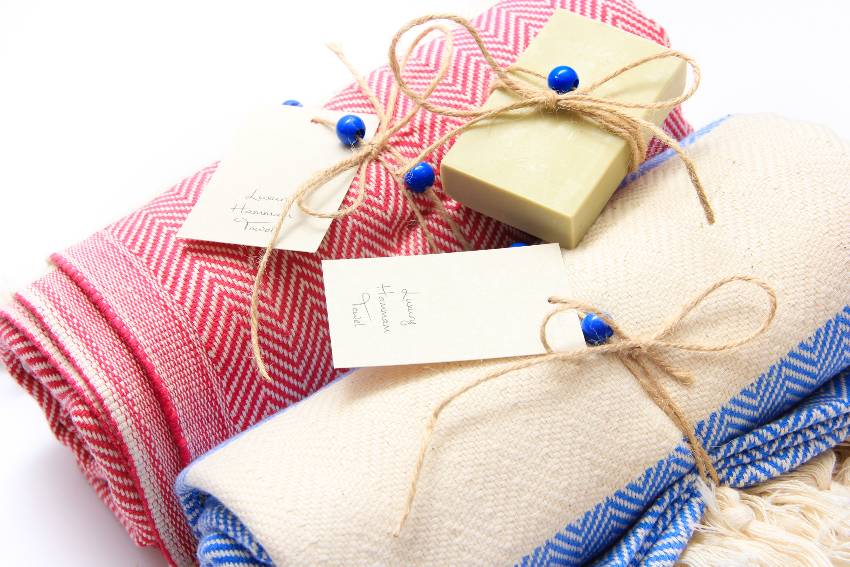
Turkish cotton and Turkish towels are more hygienic, fragrant, and long-lasting. Egyptian towels are incredibly cozy the first few times you use them, but after a month, they start to smell and shed a lot. Turkish cotton fibers are thin, long, and lightweight compared to Egyptian cotton fibers, which are thick and hefty.
Egyptian cotton is difficult to clean because of its faster absorbency and slow drying. Egyptian towels may develop an unpleasant odor, lose their softness, and grow tougher if they are not cared for properly.
Turkish cotton’s light weight makes it suitable for a skirt and a tablecloth as well as for beachwear. A thick, fluffy Egyptian towel is still just a towel, however.
If you haven’t had the chance to experience Turkish towels for yourself, you must try them out at the very least. They are perfect for any time of year, as they wick away moisture and heat (or cold), making you feel comfortable in all weather conditions.
See more related content in our article about the different types of towels on this page.

